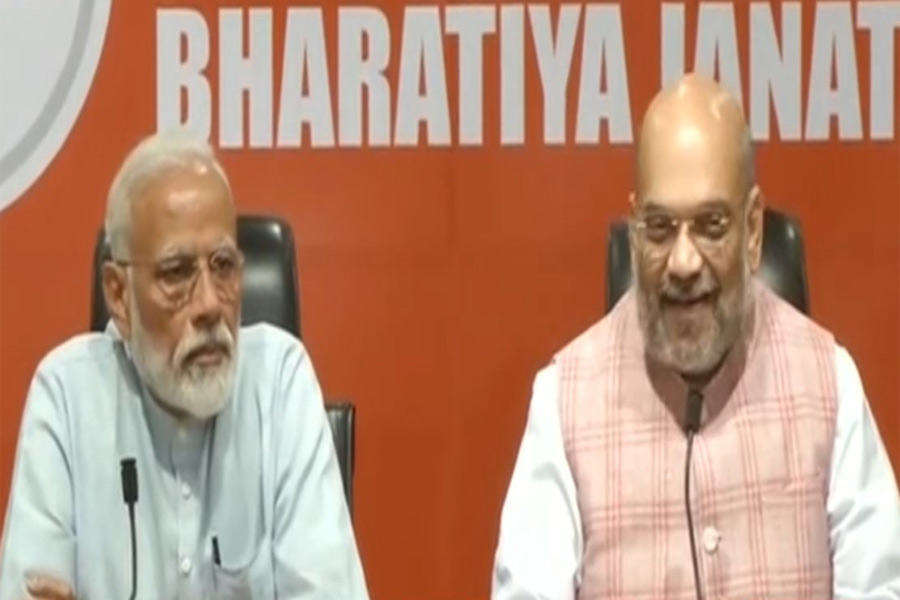We are living in an era of strongmen political leaders and a weak state. A strong state is one which gives weightage to citizens’ welfare. Instead, we are being told that a country, where the primary duty of citizens is to cheer nationalistic endeavors, is the sign of a strong country. Things have come to such a pass that in a matter of five years, we have gone from worrying about the creeping institutional decay to applauding executive excesses, where an all-powerful Prime Minister seemingly has a ‘free hand’.
The boisterous revelry of the kind showcased by ‘Howdy Modi’ that kicks in with predictable regularity serves primarily to bolster the personality cult. Unsurprisingly, these bizarre publicity stunts sometimes result in diplomatic howlers–just like it did when Prime Minister Narendra Modi performed the role of a celebrity endorser for American President Donald Trump’s re-election.
Maintaining the façade of ‘strength’ has some defining characteristics: Primary among them is incessant use of propaganda to hide failures. Prime Minister Narendra Modi and Home Minister Amit Shah have a simple strategy–showcase India’s success (real or imagined) in every field, and do not allow the people to dwell on bad news. And thus, India is on a roller coaster ride. A crippling economic downturn is being fought with government-sponsored shopping fests, foreign policy triumphs are measured by the number of hugs shared between fellow-demagogues, and the resolve to usher in development is represented by towering statues.
A second characteristic is the controlling of public discourse by suppressing dissent. The FIR against the 49 artists who wrote to the Prime Minister and similar incidents reveal an insecure mindset that explicitly identifies targets, and tacitly encourages vilification of dissenters. The shaping of the media discourse, by co-opting friendly establishments and targeting the organisations critical of the Government, is an extension of it.
A third characteristic is the premise of securing borders as an excuse for communal polarization. Minorities are being positioned as the enemy of the state and, there is a nakedly communal polarization against Muslims in the name of the National Register of Citizens (NRC) in Assam. Building detention centres for the so-called illegal immigrants is a sign of a despotic state, not a strong one.
Meanwhile, when measured by indicators that really matter, India continues to languish. Growth in per-capita income has been slow as GDP growth rates have fallen in recent years. With the manufacturing sector continuing to stagnate, job creation has been a near-impossible challenge. The crisis in the banking sector has reached a stage where the Reserve Bank of India has had to issue assurances to depositors regarding the health of the banking sector.
Tax collection in India has suffered over the last two years and this year looks no better, as gross tax revenue for the first quarter of 2019-20 increased by 1.4%, compared to the 22.4% growth registered in 2018-19. Amidst this spate of bad news on the economy, the latest is that the Ministry of Commerce and Industry data shows negative growth in core sectors of the economy in the month of August, reinforcing fears of a continued slump of the domestic economy. One can hope that the sop to the private sector in the form of lower corporate taxes will spur economic activity, but it does not nearly do enough to address the issues of weak consumer demand.
All of this might support the theory that the economy might be where Modi and Shah would eventually meet their Waterloo. The counterpoint is that the BJP won the 2019 Lok Sabha election in spite of the monumental blunders that derailed the economy.
The ‘jobs crisis’ is an instructive example of how the BJP is adept at managing headlines–in a matter of months, ‘unemployment’ has run its course as a story of interest to the national media. But things have progressively deteriorated, as the government oscillates between panicky kneejerk measures and insolence.
The problem remains the same–the strongmen who run India mistakenly believe that relying on expertise is a weakness. There is no other explanation for the seemingly willful mismanagement of the economy and its knowledge economy.
What is amply clear is that this government’s failsafe strategy remains exploiting social divisions in the country–on the basis of religion, caste, and language et al–thus weakening India. A strong state is one that can deliver justice for all. The politics of polarization has destroyed India’s reputation as a high-growth potential liberal democracy, and an excess of gaudy public relations stunts can only apply lipstick on the proverbial pig.
Ultimately, the economy might recover when global trends start turning in our favour, but as long as we are a country that is run on the basis of communal propaganda and insecure personality cults, we will continue to be seen as a weak state. After all, the strength of a country is measured only by the strength of its people.







